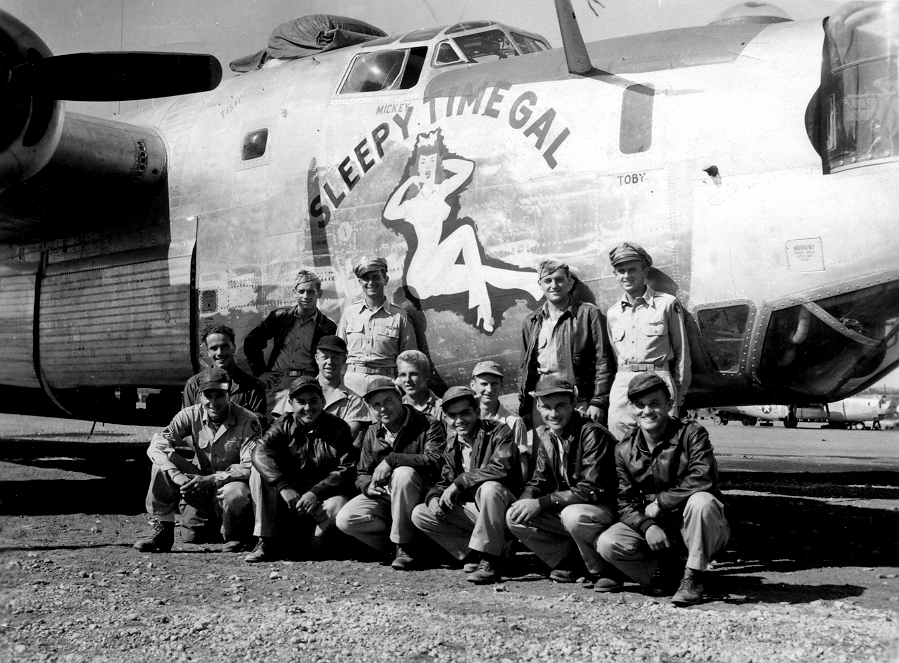By Dr. Curtis Varnell
Thumbing through the thick sheaf of papers in my hand, I felt as if I was touching history. Old enrollment papers, pay sheets, newspaper clippings, commendations, and medical reports lay scattered across my desk, a testament to one man’s patriotism and loyalty to his country. I knew the man only as my banker; a distinguished, bespectacled older man sitting behind the counter checking accounts and making decisions on loans.
Joseph (Joe) Fritchie was born into the small community of Shoal Creek in 1924. When World War 11 broke, the young 19-year old Joe felt compelled to do his part. First trained as an airplane mechanic and then later as a turret gunner, he was eventually assigned to the 449th bomber group that were assigned to the European Theater. The 449th was consisted of large aircraft that could each carry 67.6 tons of 500 pound bombs and were commonly known as the flying fortress. An identifying feature is the large clear bubble located near the front and above the cockpit area and contains a turret gunner operating a machine gun. Joseph was assigned this position and it was his duty to assist in protecting the large mammoth from attack by the smaller German attack planes.
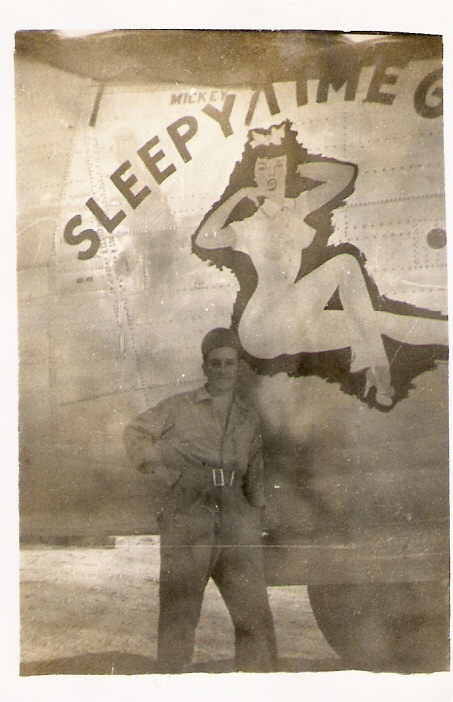
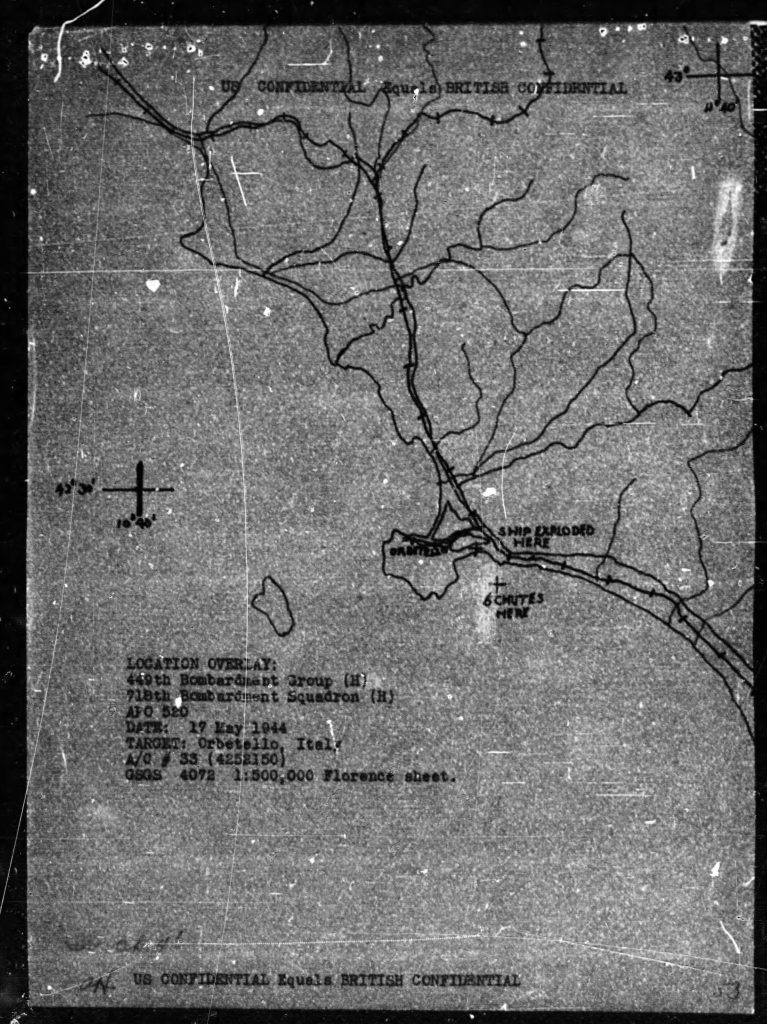
On Feb. 22, 1944, his craft, nicknamed the Sleepy Time Gal, was one of 31 B-24’s assigned the task of destroying a munitions plant located in Steyr, Austria. Narrative report 30 that I hold in my hand describes the horror of that date. “Apparently the attack group was attacked by 30 to 40 German Aircraft. The twin aircraft attacked from the rear, out of our range, with rockets at 1,500 yards. They then closed with machine guns at 400 yards.” Craft #31 was seen to wing over, the plane fell out of formation and control. Ten crew members were aboard.”
Bullets punched through the bubble over Joseph. Realizing the engine was on fire, he tried to push the bubble shield up to escape only to discover it was jammed and his legs were not functioning properly. Only then did he realize that he had been shot through both legs. Dropping into the main part of the ship, he rolled himself out the door and opened his parachute. As he floated downward, the German aircraft flew toward him. Fearful that the pilot would shoot him, Fritchie pretended dead and the craft passed him by. When he reached the ground below, he was quickly captured by German troops and he and others were thrown into a covered truck, one he later discovered to be a truck carrying the dead. Seven of his crew members were killed in the attack; he found later five of them were buried in a common grave in Austria.
Taken to a hospital, he was treated for extensive damage and always felt it was a miracle that he survived without the aid of penicillin and other drugs. On the home front, the family was notified that he was missing and it was months before a letter finally reached them telling them he was a POW. The letters, some in German, are in the file.
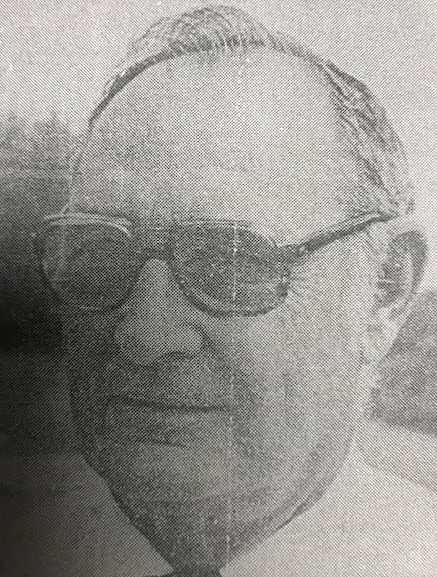
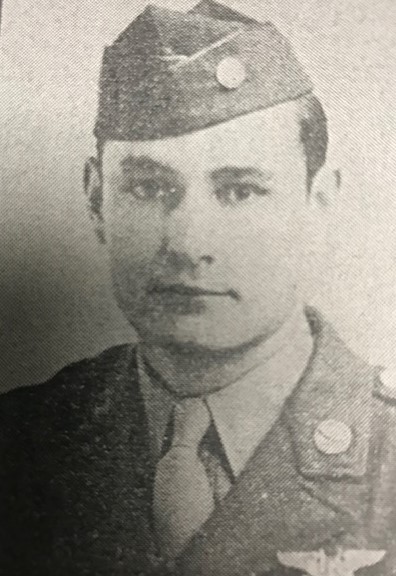
Food was scarce in the POW camps and the men survived with the aid of care packages arriving from home. As the allies advanced, the prisoners were moved from one camp to another. On one occasion, the buildings he was in was strafed by allied fire. One of his captors, Gerhard Neitz bundled himself in a blanket doused in water and carried Joe and his comrades that couldn’t walk to safety. The file contains a letter from Neitz’s brother seeking help after the war was over. On another occasion, Joe and his friend Doug Hall of Mansfield were being transported from camp to camp on a train when allied planes bombed the train. The German guards fled but Joe and his friend stayed in the car, eating the sausage and bread deserted by their captors. Joe remained a captive for eleven months before being released. He then spent two years in a Shreveport Hospital being rehabilitated.
The files are extensive, the story only half-told but enough for me to understand why the men of that era are called the greatest generation. Many when asked if they would do it again said, as did Joe Fritchie, “I would do it again if my country needed me.” Joe proved it. In my hands is his document releasing him from military service on July 17, 1946 and another file showing his reentry into the USAF reserves on July 18, 1946. He served until July of 1949. On Memorial Day, let us not forget the price paid for our freedom or the men and women that made it happen.

